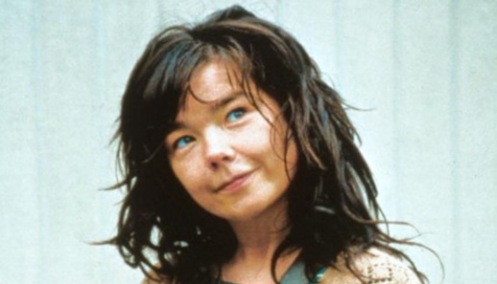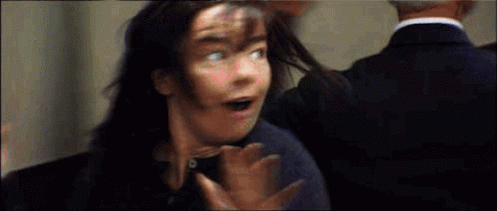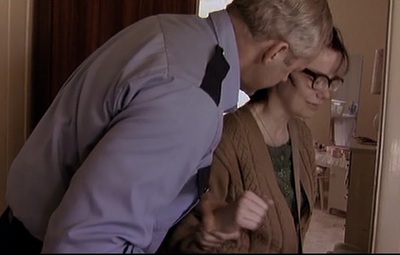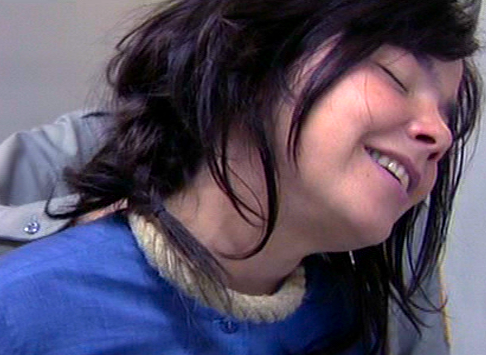The Next to Last Word: Impossibility of Survival in DANCER IN THE DARK
24 March 2013
Without question, Dancer in the Dark is unlike most other films; it is remarkably unique in its narrative and composition. Fantasy elements of the film counter moments of realism and sobering dramatic scenes. Moreover, colorful musical numbers counter elements of gruesome horror. While this is a terrifically unconventional film, Dancer in the Dark is a signature von Trier film. The film aligns with the auteur’s filmography; not only is the camerawork consistent with von Trier’s style, but Dancer in the Dark also threads poplar von Trier themes, such as isolation, emotional and physical torture, and, perhaps most noticeably, the impossibility of survival.
Set in 1964 Washington, Lars von Trier’s turn-of-the-century film tells of one woman’s catastrophic spiral from low-income, handicapped, single mother to convicted murderer and death-row inmate. Selma (Bjork) immigrated to America, from (then) Czechoslovakia, and works a minimum-wage job in a factory. She loves musical theatre and movie-musicals, often cheerfully daydreaming about passing her life through song and dance numbers. She and her adolescent son, Jean, rent a trailer not far from Selma’s work, but, aside from rent, Selma saves every dime she earns, even refusing to splurge on birthday presents for her son. Saving is important to Selma because she is going blind, due to a hereditary disease. Jean also has the disease, and she wants to save every penny so he can have an operation to correct his failing sight before he, too, goes permanently blind. Unfortunately, as her eyesight rapidly weakens, Selma becomes more vulnerable. Her landlord, Bill (David Morse), who has mounting financial trouble, steals Selma’s savings. In an unforeseen and unexplainable twist, Selma kills Bill to recoup the money he took from her, the money she desperately needs for her child. Selma is put in prison and sentenced to death. Although her friends try and appeal Selma’s death penalty, Selma refuses to have any money spent on her case; she prefers to accept her fate so long as all money is spent on her son’s operation.
One of the film’s most captivating themes is the impossibility of survival. In Dancer in the Dark, as in other von Trier films, it becomes impossible for the protagonist to survive; the protagonist is faced with one impossible situation after another until life itself becomes impossible. Throughout the film, von Trier writes impossible situations for Selma. While Selma is a daydreaming optimist, these situations are entirely hopeless. With each passing impossible situation, Selma’s life becomes less functional, until its inevitable end when her life becomes too impossible to survive.
The film’s opening scene is, metaphorically, about the impossibility of Selma’s survival, represented by the first impossible situation viewers see Selma in. Dancer in the Dark begins with Selma at rehearsal for her community theatre’s rendition of The Sound of Music, starring Selma as Maria, the lead. While practicing “My Favorite Things,” Selma’s impractical director expects all the “favorite” items mentioned in the song be gracefully handed to Selma; however, the list of items is tremendously long and the items are peculiar shapes and sizes, making it impossible for Selma to hold each one. Eventually, Kathy (Catherine Deneuve), Selma’s close friend and co-star in The Sound of Music, places one of the items, a plate of noodles, on Selma’s head simply because there was no way for Selma to hold the item with her hands. Clearly, the director’s demands—or, more pointedly (and ironically), the director’s vision—is impossible. Therefore, this opening scene in Dancer in the Dark, which serves as prologue to the actual narrative’s beginning, highlights impossibility, laying the thematic foundation for the rest of the film to build upon.
The crippling position Bill puts Selma in is also an impossible situation. Because Bill and his wife have always been caring and compassionate landlords, Selma trusts Bill. Moreover, Bill is a police officer in the community, a position that typically earns trust and respect from citizens. Early in the film, Selma naively disclosed to Bill that she was saving cash for her son’s eye surgery; therefore, when Bill’s financial situation became unstable he pressured her for a loan. Selma refused the loan, claiming the savings was her son’s money, not hers, so she would not be able to loan it to anyone. Bill then took advantage of Selma’s blindness and stole the money she refused to let him borrow, leaving her destitute.
Thus, Bill has Selma in an impossible situation, and one that is entirely hopeless and irrevocably complicates her ability to survive. Because the money is cash there is no way to prove who it belongs to. Also, since Bill is a police officer and upstanding member of the community, who would Selma go to about being robbed? Her only hope was to confront Bill and demand her money back. Sightless, Selma walks into Bill and Linda’s home only to find out Brill has lied and told his wife that Selma made a pass at him, purposefully attacking Selma’s character and ruining her credibility. Her destitution devolves into peril when Selma asks Bill for the money back. Guilt ridden and full of shame, Bill decides he cannot go on in life, but cannot bring himself to commit suicide, so he demands she kill him is she wants her savings returned. Confused, sightless, and emotionally devastated Selma concedes to Bill’s demand; she kills Bill. Bill’s thievish actions put Selma in an impossible situation, but his continuing selfishness brought her to complete ruin by making her a murderess.
In her final impossible situation, Selma awaits death as a convicted murderer. Although she has access to the savings she retrieved from Bill before his death, she must decide whether to use it to appeal her death sentence or to use it as she originally intended it, for Jean’s surgery. Her own life or the sight of her child is an impossible situation to choose between, but Selma chooses her son’s vision of her own survival. Selma’s final impossible situation solidifies the impossibility of her survival, thus fulfilling the theme. In choosing her son it becomes impossible for Selma to live, and she is executed, by hanging, in prison.
For a time, Selma can escape all her impossibilities through fantasy, but even her daydreams are impossible; they are absurd. In all, Dancer in the Dark, like many von Trier films, pits its protagonist against one impossible situation after another, until, in its conclusion, life itself becomes impossible for Selma.














